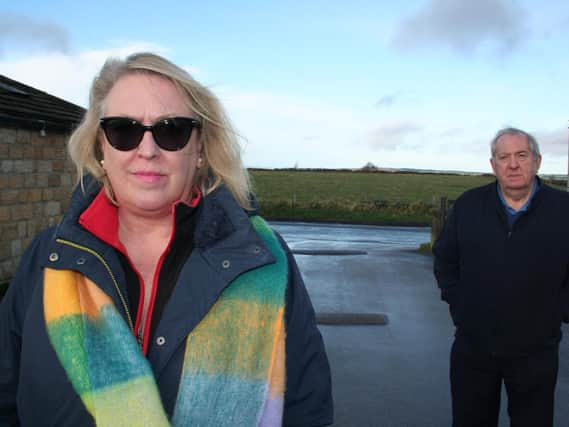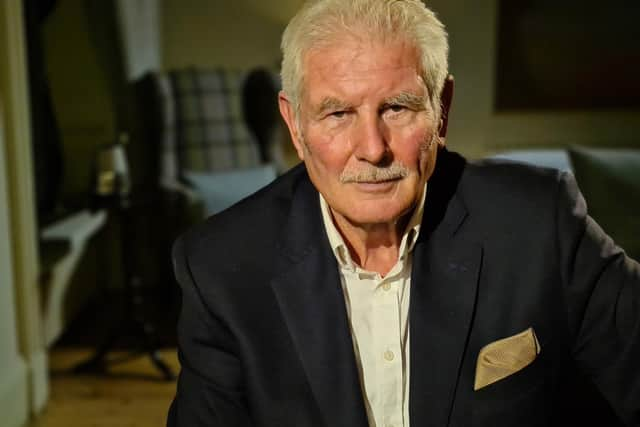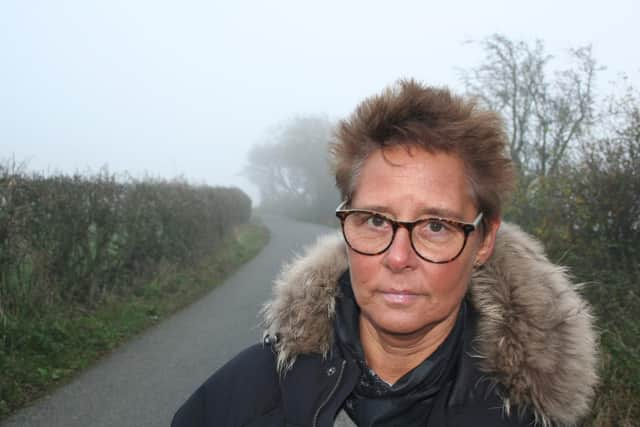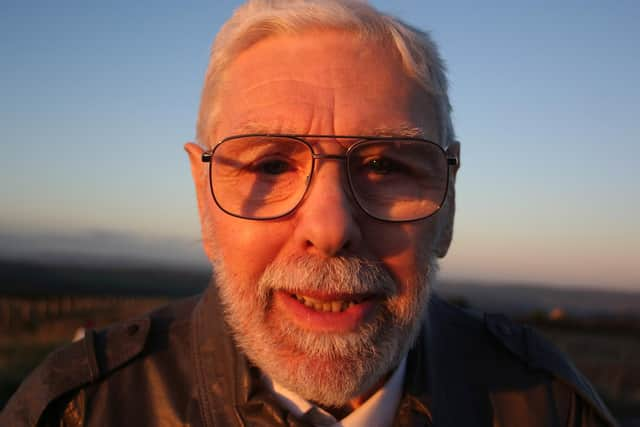How Channel 5 documentary stands up for Yorkshire's 'forgotten' Peter Sutcliffe victims and survivors


Unfinished business with Peter Sutcliffe has caused ex-police boss Dr Keith Hellawell great anguish.
This he feels on behalf of survivors and families who have met no closure despite what he calls a “10 year crusade” to draw confessions from the murderer.
Advertisement
Hide AdAdvertisement
Hide AdAfter his conviction, serial killer Sutcliffe admitted to two other attempted murders but no more – though Dr Hellawell believes he ended the lives of at least eight other women.


A Channel 5 documentary tomorrow night claims to reveal the stories of four “forgotten victims” outside of the 20 he was put away for – featuring three on the programme who survived attacks and one who did not.
These are Tracy Browne and Mo Lea – Hellawell is certain Sutcliffe attacked both and in the case of the former woman, it was a crime the Bingley-born former lorry driver confessed to as well as to one on Irish student Ann Rooney in Leeds in 1979 – but also two men, John Tomey and Fred Craven.
So when Dr Hellawell, who was Chief Constable of West Yorkshire Police in the 1990s, learned of the killer’s own death last autumn, he did “very much” consider that they had unfinished business, he told The Yorkshire Post.
Advertisement
Hide AdAdvertisement
Hide Ad“I think when you work so long on something like that and there is so much human pain and suffering and anguish involved, you desperately want to know what the truth is and the search for the truth is something that has sort of pushed me through all of those years,” he says.


“So a number of females, particularly, don’t have closure and their families don’t have closure because they feel that he committed those offences – I feel he committed those offences – (and) I feel in many ways I’ve let them down by not being able to get him to tell me, to get a confession.
"And I think that West Yorkshire Police has worked tirelessly ever since with the scientific aids that weren’t available to me, and still he would not confess to the other crimes, just the two additional attempts after he was convicted.
“So he goes to his death without giving peace and some degree of closure to so many people and I think that’s tragic. So I feel I’ve let them down. It’s been a long time since I’ve retired but I really feel their anguish and their pain and I’ve spoken to them and their families, and I wish I’d have done better.”
Advertisement
Hide AdAdvertisement
Hide AdDr Hellawell’s interviews with Sutcliffe in Broadmoor after his conviction formed a large part of efforts to reveal the truth about other cases linked to the killer and he is now featured in The Yorkshire Ripper’s New Victims, which is aired by the broadcaster at 9pm tomorrow.


So is Lea, who suffered a hammer blow to the head and a screwdriver attack to her back near Woodhouse Lane in Leeds after a night out planning her 21st birthday in October 1980, while an art student.
She told the Post: “It’s been very important to me to hear my name mentioned by Keith Hellawell, who I did meet, and (retired detective) Roger Parnell, who I met, who in no uncertain terms were convinced that Peter Sutcliffe attacked me. And that was very reassuring.”
Lea, 61, adds: “I think the documentary is absolutely amazing. You know, the way it’s nurtured us as survivors to be free enough to really talk in depth about how we actually do feel – regardless of the attack – with the way that the police had mishandled it.”
Advertisement
Hide AdAdvertisement
Hide AdShe believes police at the time did not heed her warnings, and says: “The way that you’re left feeling unnecessary in a huge investigation can make you feel pretty worthless.”
Sutcliffe died aged 74 in November last year while serving a whole life term, latterly at HMP Frankland, but the facts of his crimes in the 1970s and early 80s have been pored over since they happened.
Ultimately, he was convicted of murdering 13 women and seven attempted murders, for which he was jailed in 1981.
Soon after a report by a former inspector of constabulary, Sir Lawrence Byford, which was only made public in 2006, concluded that Sutcliffe could have been responsible for 13 more offences.
Advertisement
Hide AdAdvertisement
Hide AdIn 2016 officers visited a small number of people named as victims of unsolved assaults, but prosecutions were not brought.
Among the criticisms of the force’s most exhaustive investigation ever was one that detectives were thrown off course when what was later revealed to be a hoax tape was posted to them purporting to be from the murderer, who called himself ‘Jack’ and had a Wearside accent.
All of the cases for which Sutcliffe was not convicted that are included in the documentary have been reported in the past, but the film aims to further explore “how these victims were ignored, marginalised and dismissed by the police at the time”, says Channel 5, and posits the missed opportunities to bring him to justice earlier.
As well as the testimony of Lea and Browne, who suffered an attack in Silsden in August 1975, when she was 14, the cases of two men are also included: John Tomey, who survived an attack to his head on a remote road near Oxenhope, and Fred Craven, a neighbour of Sutcliffe who was bludgeoned to death in Bingley, the killer’s home town in Bradford.
Advertisement
Hide AdAdvertisement
Hide AdMr Craven was fatally wounded with a hammer in his office in 1966 while Leeds taxi driver Mr Tomey survived his attack by a passenger outside his car in moorland in 1967 – years before Sutcliffe murdered 28-year-old mother Wilma McCann, the first official victim – in October 1975.
The programme makes convincing connections: both cases involved blows to the head from behind and while Channel 5 speak to Mr Craven’s family members about a grievance the killer had with their grandfather they believe reveals a motive, Mr Tomey elsewhere shows a police photofit that bears a strong resemblance to Sutcliffe.
After spending 45 minutes in his taxi with the attacker in his rear view mirror Mr Tomey, who continues to suffer hearing problems because of brain damage, says in the film: “I got a bloody good look at him.”
Sutcliffe denied both Mr Tomey’s and Mr Craven’s attacks and Dr Hellawell says he has “reservations” about his links to them too after his conversations with the killer.
Advertisement
Hide AdAdvertisement
Hide AdAward-winning documentary maker Heenan Bhatti directed the programme for his own Leeds-based ClockWork Films company alongside the city’s Daisybeck Studios, as part of the channel’s BAME-Indie Initiative.
He did want to present viewers with new information, but Bhatti felt a responsibility to his contributors more than the pressure of one-upping other documentaries about Sutcliffe on the BBC and Netflix.
“The pressure I felt was actually telling their story properly,” he says. “Their anger and the freshness of that.”
Intrigue about the case shows no sign stopping, despite his death. Thankfully, right now, the lens is finally focused on those who desperately want their stories told.
Police open to cold case reviews
Advertisement
Hide AdAdvertisement
Hide AdWest Yorkshire Police continues to review “non-recent undetected offences in line with national guidance,” a spokesman says, and referenced the cases reinvestigated in 2016 following outcome of the Byford report.
The spokesman told the Post: “It was not possible to bring prosecutions as result of this review process, but the force continues to review and where possible reinvestigate all unresolved homicides and serious crimes to bring offenders to justice and to bring much needed closure to the victims and their families.
“Should any new lines of investigation regarding any potential suspects be identified during cold case reviews, they will be pursued and forensic opportunities explored.”
Comment Guidelines
National World encourages reader discussion on our stories. User feedback, insights and back-and-forth exchanges add a rich layer of context to reporting. Please review our Community Guidelines before commenting.